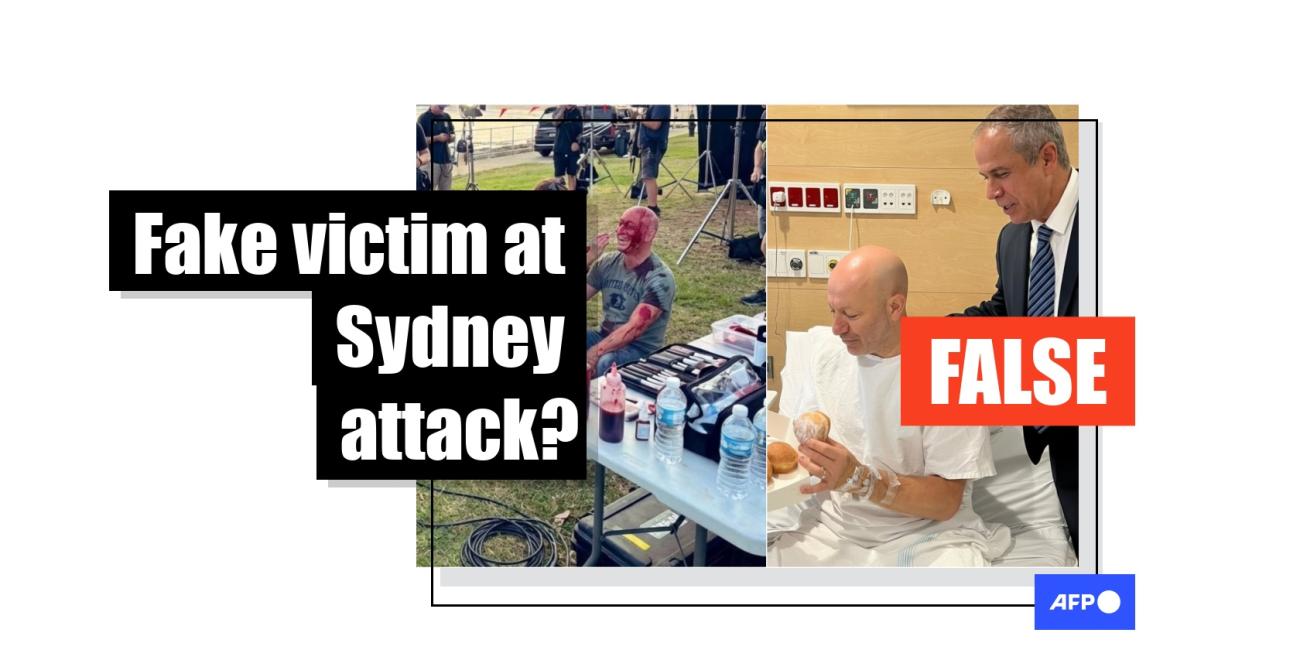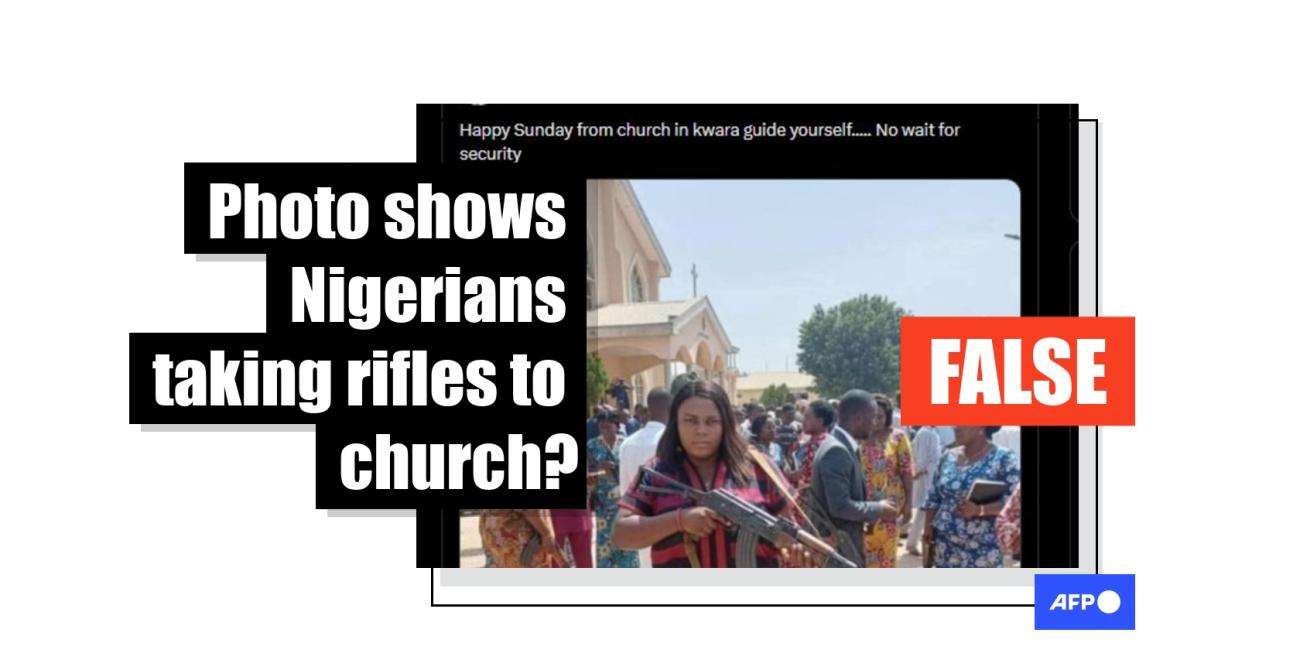
AI-generated images of DeepSeek startup team circulate online
- Published on February 19, 2025 at 09:21
- Updated on March 10, 2025 at 02:23
- 2 min read
- By Tommy WANG, AFP Hong Kong
The two images of a group of people were shared in separate X posts on January 28 and February 2, alongside captions claiming they show the young DeepSeek team.
"The average age of the Deepseek team is less than 35 years old. This group of young people has caused panic in the technology community in the United States," reads the simplified Chinese caption of one of the posts.
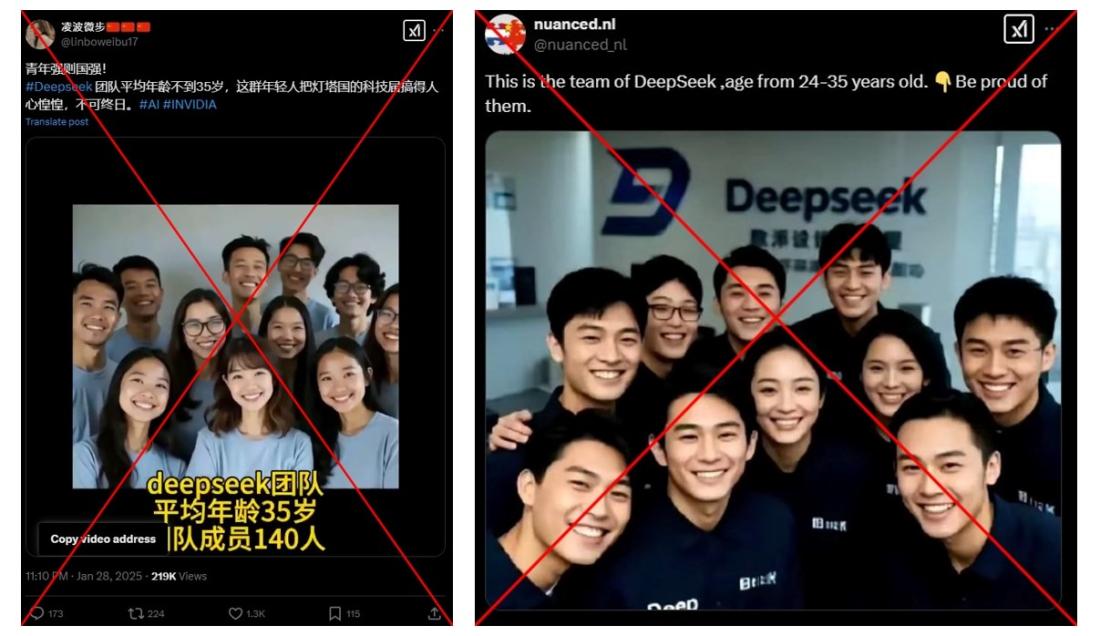
DeepSeek's R1 chatbot stunned investors and industry insiders with its ability to match the functions of its Western competitors at a fraction of the cost, though a number of countries have questioned its storage of user data and have moved to ban it from government devices (archived link).
Founded in May 2023, the firm is the brainchild of tech and business prodigy Liang Wenfeng, who was born in 1985 (archived link).
In an interview with a Chinese tech media 36kr in May 2023, Liang said the core technical positions of the company "are essentially filled with freshmen and people who graduated a year or two ago" (archived link).
The images were also viewed tens of thousands of times elsewhere on X and Facebook.
Visual errors
The two images contained inconsistencies indicating they were AI-generated, said Shu Hu, director of the Purdue Machine Learning and Media Forensics (M2) Lab (archived link). He pointed out blurry ears and a lack of details in teeth and pupils in both images.
Siwei Lyu, director of the University at Buffalo's Media Forensic Lab (UB MDFL) also pointed out a "noticeable colour difference" on one face, an unnaturally long neck and some identical eyes and mouths of the people in the images (archived link).
"Everyone's smile in the images is unnaturally uniform, resembling the stereotypical smile learned by an AI model," Lyu told AFP. "Their teeth are showing [in the images] at nearly the same angle, which is unusual for real photos."
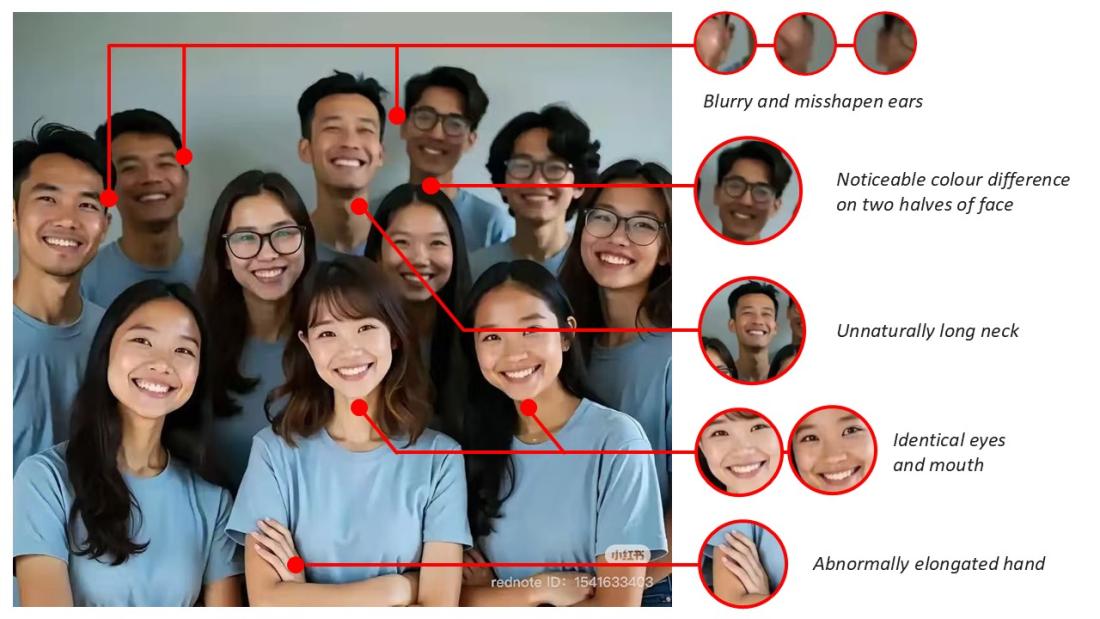
In addition to the blurry rendering of ears, the second image also features irregular "text" on the uniforms, as well as an erroneous DeepSeek logo in the background. The company's genuine logo is a whale.
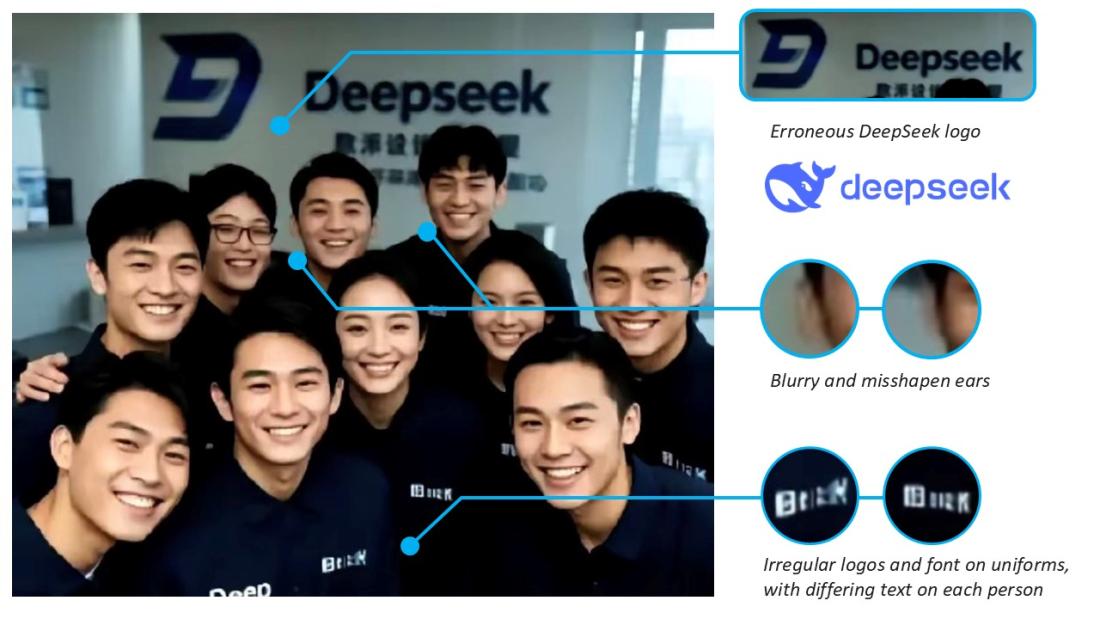
March 10, 2025 A previous version of this story included an analysis of the images using an experimental tool. Although the results also showed traces of AI, we have updated the report to exclude the findings.
Copyright © AFP 2017-2025. Any commercial use of this content requires a subscription. Click here to find out more.
Is there content that you would like AFP to fact-check? Get in touch.
Contact us


